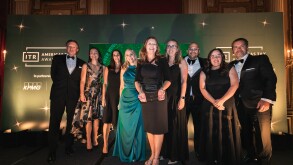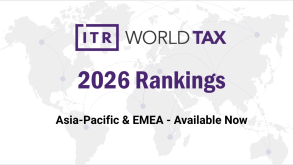In the inbound M&A tax space, a number of key issues stood out in the past year.
Firstly, according to Ministry of Commerce (MOFCOM) data released in October 2019, foreign direct investment (FDI) into mainland China rose 2.9% year on year. Inbound M&A and green field investment amounted to $100.8 billion for the period from January to September 2019. Within this overall figure it is understood that inbound M&A has fallen, with more detailed data on the breakdown to become available later in the year. The fall could be a reflection of the US-China trade dispute, as well as investor concerns about the prospects for the China market going forward. However, against this, M&A in advanced sectors such as life sciences and logistics remain hot. Indeed, this is reflected in the fact that, in the data to September 2019, foreign investment in high-tech industries increased 39.8% year on year – it now accounts for close to 30% of total FDI. Consequently, tax issues arising in connection with investment in these sectors have become a matter of keen interest.
Second, due to the lack of detailed Chinese partnership tax guidance, there have long been areas of uncertainty for venture capital (VC) funds taking partnership form. To address this, on January 10 2019 the Ministry of Finance (MOF), State Tax Administration (STA), the National Development and Reform Commission (NDRC), and the China Securities and Regulatory Commission (CSRC) jointly released the notice on individual income tax (IIT) policies for natural person partners in VC partnerships (Circular 8). This constitutes a major breakthrough in IIT guidance for partnerships, clarifying that VC partnerships may be treated as 'investment conduits'.
A third issue that has come to the fore relates to offshore disposals. It has been almost five years since the 2015 release of the revised indirect offshore disposal rules in STA Announcement 7. The local tax authorities are getting more experienced and sophisticated in dealing with the tax issues arising under these rules for cross-border M&A transactions. In the past year, the STA has proactively organised meetings between local tax authorities and professional bodies to discuss the technical issues and practical difficulties arising. Although no further formal regulations have been released in the past year, it is hoped that more clarity for uncertain areas, such as the calculation of the tax cost base and qualification for safe harbour rules, will be provided in the future.
The most important issues to get to grips with in this changing environment will be the typical tax due diligence (TDD) issues, including the challenges and opportunities in the logistics and life sciences sectors. Also of great importance are the Circular 8 IIT preferential policy for VC partnerships and the recent developments with Announcement 7.
Logistics and life sciences
In recent years, the Chinese logistics sector has seen rapid development, driven by the development of online sales. Non-vehicle operating common carriers (NVOCs) in particular, which arrange carrier services but do not themselves carry out the delivery, have become particularly attractive for M&A, with government support stimulating the growth of such services. However, with NVOC business operating models still at a developmental stage, the appropriate sales revenue recognition approach and relevant tax treatment remain unclear, meaning investors must pay close attention to the potential tax risks.
The traditional model for express delivery services involves a number of service elements, including: pick-up, allocation, transportation, and delivery. NVOCs, in view of their business models, regard themselves as being 'agents'. They consequently treat the delivery fee, which they receive from customers, as being (minus the NVOC commission) an amount payable to the enterprise carrying out the delivery; namely, the franchisee. That is, instead of the NVOC booking the entire service fee as their own revenue, they seek to book solely their commission as income. The following non-exhaustive list of examples can, however, lead the tax authorities to take a different position:
Where the service contract with the end customer is typically signed in the name of the NVOC, instead of using the name of the franchisees;
Where the NVOC has the pricing latitude for the express service; and
Where the conduct of the express service is under the overall control of the NVOC.
As NVOCs view themselves as agents, it is not uncommon for them to report VAT on their commission income at the 6% rate used for intermediary services. Two potential VAT risks thus arise. As the final customer is paying the NVOC a fee, covering the entire service provision (including goods pick-up, allocation, transportation, and last-mile delivery), the authorities may seek VAT to be accounted for on the entire amount, rather than on just the NVOC commission. As such, the NVOC may need to claim input VAT credit (for the payments to the franchisees) against the larger amount of output VAT. Additionally, the tax authorities may characterise the activity as a transportation service, rather than as an intermediary service, and seek to impose VAT at the 9% rate.
For investors looking at targets in the Chinese logistics industry, regard must be had to potential tax authority challenges based on disagreement over the appropriate tax characterisation of the target's business model. The potential costs of changing the business arrangement for tax compliance purposes, post-deal, may need to be examined.
When it comes to life sciences, start-ups in the Chinese life sciences sector continued to draw significant interest from funds and corporate investors. This is in particular because IPO exits are expected to increase with the launch of the Shanghai Stock Exchange's Sci-Tech Innovation Board. It is also because of government moves to implement healthcare reforms.
Typical tax issues, such as the use by target companies of false tax invoices, which lack any underlying business substance, can arise for life sciences enterprises, especially for pharmaceutical and medical device companies, as occurs for traditional manufacturing companies. These may be supporting fraudulent claims for VAT input credit, corporate income tax (CIT) deductions, or IIT underpayment for employees, and other such issues.
For start-ups in the pharmaceutical and medical device sectors, formal tax invoices may be difficult to obtain for payment of clinical trial expenses to agents or hospitals, speaker fees for industry conferences, etc. This can be because of the lack of tax-compliant invoice issuances by these third parties, or regulatory restrictions obstructing such issuances.
In some cases, false invoices may have been obtained from illegal channels. In addition, certain expenses, such as sponsorship, advertising and promotion expenses and entertainment expenses, may be incorrectly classified into other expense categories in corporate accounts. These expenses are not permitted full CIT deductions, and consequently this inappropriate classification may have resulted in deductions being claimed to which the enterprise was not entitled.
These matters are focus areas during tax audits. Therefore, reviewing service agreements signed with vendors and sample vouching of tax invoices in respect of the relevant expenses should be performed as part of TDD procedures, to assess whether the expenses deduction can be supported, whether input VAT is creditable and whether the CIT treatment of expenses is correct.
Many life sciences tech start-ups apply for a high and new technology enterprise (HNTE) certificate, allowing them to enjoy a preferential 15% tax rate as a highly innovative company. They may even make an application at an early stage of operations, when they are still in a loss-making position, as the tax losses can be carried forward and offset for the following 10 years (this follows rule changes for HNTEs in 2018).
However, a common tax risk for target companies in the life sciences industry is that their HNTE qualification may be questionable. On review, it may be found that some of the target companies do not satisfy all the HNTE criteria. These include requirements for the HNTE to own its core intellectual property (IP), meet the requisite R&D expense/sales percentage, have sufficient qualifying revenue from high-tech products/services and have a sufficient percentage of employees engaged in R&D-related activities, among other criteria.
Finally, it is not uncommon for pharmaceutical companies to provide gift bags to doctors during industry conferences and events. The IIT should be withheld by pharmaceutical companies on these gifts, and may be overlooked by the pharmaceutical companies. Tax authority IIT enforcement efforts have focused on this area, and the authorities have used keyword searches (for 'gifts') on accounting journal entries, the data for which they obtained within the framework of the thousand enterprise initiative (TEI).
IIT for venture capital partnerships
The lack of detailed Chinese partnership tax rules mean that uncertainty has existed for the tax treatment of funds in the form of partnerships; a key area for consideration is the appropriate IIT treatment for individual partners where the partnership derives income from equity transfers.
The local practice in certain locations in China was to treat capital gains arising on such transfers as 'other income' for IIT purposes, separating it from the business income of the partnership and applying the 20% IIT rate to the partners. However, in 2018, some local tax authorities challenged this position. We saw cases across China where the natural person partners were required to treat these capital gains as part of the business income subject to progressive IIT rates from 5% to 35%. This significantly increased tax leakages for investors in the funds.
As noted above, Circular 8 was released in January 2019 to address these issues. VC partnerships can choose from two calculation methods in respect of their natural person partners' income. The first is the individual investment fund-based method. Under this method, the income derived by VC partnerships from an equity transfer, and received by natural person partners, can be accounted separately from partnership business income and subject to the 20% IIT rate. The second is the overall annual income-based method. This allows a natural person partner's portion of their income derived through the partnership to be designated as part of business income, and subject to progressive IIT rates from 5% to 35%.
Highlights on the policy include the following:
Circular 8 is applicable for natural person partners of VC partnerships that comply with record filing requirements.
For VC partnerships that select the individual investment fund-based method, income derived from equity transfer and dividend income are both required to be accounted for separately. On exit from investment positions, taxable gains on equity transfer are calculated as transfer consideration minus investment cost and reasonable transaction expenses. Gains and losses from different investment projects can be net-off within a calendar year. However, losses are not allowed to be carried forward.
For VC partnerships that select the overall annual income-based method, the taxable income of the whole VC partnership should be calculated on a calendar year basis. Different income categories and different investment projects are not required to be accounted separately. Losses are allowed to be carried forward for the following five years.
Once a VC partnership selects a particular calculation method, the option is not allowed to be changed within three years.
As can be seen, Circular 8 allows VC partnerships to decide whether or not to adopt 'transparent' tax treatment in relation to income characterisation. It is advisable for VC partnerships to conduct a tax cost analysis of both options, based on the lifecycle of the investment projects and investment return expectations, together with overall expenses such as management fees, to choose the most tax efficient option.
Announcement 7
As noted at the beginning, local tax authorities are getting more experienced and sophisticated in dealing with cross-border M&A transactions under Announcement 7. For Announcement 7 reporting, more local tax bureaus (at least most of the tax bureaus in the Tier 1 and 2 cities) have set up standard procedures, and are willing to issue official acknowledgement receipts to confirm their acceptance of the filing documents. The Announcement 7 reporting procedure is getting more straightforward at the initial filing stage – this had raised significant challenges in the past.
In addition, during the past few years, the STA has also proactively collected questions received from local tax authorities, with a view to fine tuning policy. The STA has organised meetings between local tax authorities and tax advisory firms to discuss the tax issues and practical difficulties encountered when dealing with offshore indirect disposal cases.
One of the hot topics with respect to Announcement 7 is the calculation of the tax cost base. As noted in the discussions on M&A tax in the previous editions of China – Looking Ahead, if no Chinese tax has been paid on the previous transaction (on the prior acquisition of the offshore indirect investment structure by the disposer), the offshore seller may potentially suffer a higher tax cost. This is because local tax bureaus may potentially only allow the Chinese subsidiary's paid up capital (specifically, registered capital and capital reserves) to be deducted in calculating the taxable gain.
In addition, issues could arise for investors who make investments by subscribing to newly issued shares at an offshore level where a share premium is in point. In such cases, as earlier investors may have invested at a lower price point (with no or a lower share premium), there will be a difference between the percentage of the share capital invested by the new investors, and the shareholding percentage they hold (which will be lower). Under existing Chinese tax authority practices on cost base calculation, the base cost granted to the new investors for tax purposes will be reflective of their shareholding percentage (and consequently can be much less than their actual invested capital). This can lead to a higher tax liability for these offshore investors on exit.
The STA has sought, through the meetings arranged, to build understanding and arrive at solutions to these issues. It has also sought solutions for other matters, including access to group restructuring relief, offshore disposal price allocation between onshore and offshore entities, and tax revenue allocation between tax bureaus in different locations. Although no conclusions have yet been reached on these topics, now that the issues have been broached and are becoming better understood at authority level, it is hoped that more clarity will be forthcoming.
Looking ahead
While there is still little sign yet that the China-US trade dispute will be resolved in the near future, with IPOs facilitated by the Shanghai Stock Exchange's new Sci-Tech Innovation Board, the further expansion of China's free trade zones, and other promising regulatory and commercial developments, inbound M&A activity into China is still expected to remain robust.
In order to boost investor confidence for investments into China, the Chinese government is understood to be working on a revision of M&A tax rules to allow for more complex deal arrangements and more tax efficient structures. Going forward, taxpayers look forward to greater clarity on Announcement 7 and rules on partnership taxation and restructuring.
Michael Wong |
|
|---|---|

|
Partner, Tax KPMG China Beijing Tel: +86 10 8508 7085 Michael Wong is a partner and the national leader of deal advisory, M&A tax for KPMG China. He is based in Beijing and focuses on serving state-owned and private Chinese companies in relation to their outbound investments. Michael has extensive experience leading global teams to assist Chinese state-owned and private companies on large-scale overseas M&A transactions in various sectors, including oil and gas, power and utilities, mining, financial services, manufacturing and infrastructure. |
Chris Mak |
|
|---|---|

|
Partner, Tax KPMG China Shanghai Tel: +86 21 2212 3409 Christopher Mak has more than 15 years of experience in advising multinational clients across a wide range of sectors such as the consumer, industrial and manufacturing, real estate, technology, media and telecommunications (TMT) industries in relation to appropriate corporate holding and funding structures to conduct their business activities in Australia and China. Since joining the Shanghai office, he has been heavily involved in assisting foreign companies on Chinese tax issues arising from their investment into China including global restructuring, company set-ups, tax due diligence, foreign exchange remittance issues and M&A transactions. |
Stella Zhang |
|
|---|---|

|
Senior manager, Tax KPMG China Shanghai Tel: +86 21 2212 3303 Stella Zhang started her career as a professional tax consultant with KPMG in Shanghai in 2008. Stella has more than 10 years of specialist tax experience in China, providing tax advice to multinational companies and domestic companies. Stella advises on inbound investment structures, business carve-outs, company restructurings and tax planning. She is also extensively engaged in tax due diligence and tax health check projects. |














